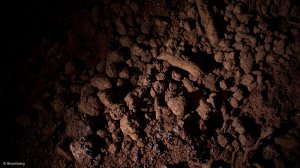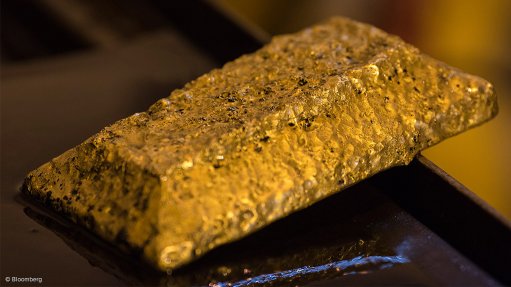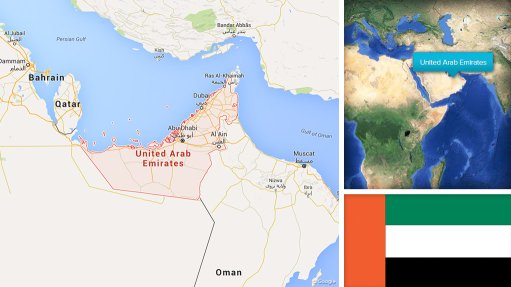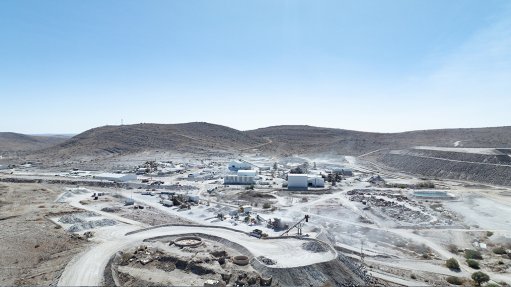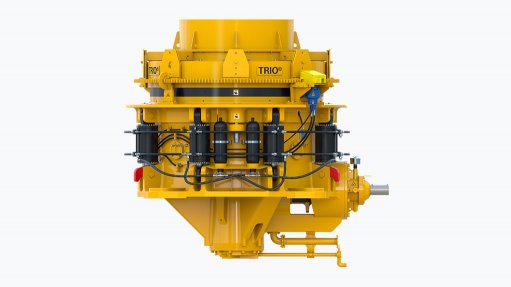Global bauxite production outlook lowered for 2025
Global bauxite production growth is expected to slow to 2% this year, reaching 451.3-million tonnes, after forecasts were revised down by BMI – A Fitch Solutions company – in its ‘Global Bauxite Mining Outlook’ report published this week.
BMI cited weaker-than-expected data from Mainland China and escalating political and regulatory risks in Guinea. The updated outlook reflects reduced growth expectations for both markets, partially offset by stronger projections for Australia, and signals the potential for further downward revisions if political uncertainty and regulatory disruptions continue to affect the sector.
The long-term outlook forecasts average annual global output growth of 2.3% between this year and 2034, according to the BMI report. This is supported by new projects in Guinea and Australia and driven by rising aluminium demand across end-use sectors, particularly in clean energy technologies. These trends underpin projections for sustained expansion despite short-term volatility.
The report stated that Guinea became the world’s largest bauxite producer in 2023, overtaking Australia after output rose to 123-million tonnes, compared with Australia’s 104-million tonnes. The country’s bauxite industry has become central to its economy, yet it faces a combination of political instability, rising resource nationalism and operational disruptions that have affected production forecasts.
BMI noted that in May the government reportedly announced plans to revoke Emirates Global Aluminium’s bauxite mining licence, signalling potential disruptions to its output outlook. This situation escalated in August when authorities formally stripped Emirates Global Aluminium of its mining rights and transferred the concession to a newly created State-owned entity.
The move followed the suspension of Emirates Global Aluminium’s exports in October 2024 by Guinea’s customs authorities owing to concerns over customs duties.
In response to these developments, BMI revised its production growth forecast for Guinea for this year down to 4% from 5.5% previously, with output now expected to reach 136-million tonnes.
The report stated that production growth in the market remains subject to risks, including possible delays, further policy changes, supply chain constraints, seasonal weather disruptions, labour unrest and infrastructure limitations. Over the long term, output is projected to reach 164-million tonnes by 2034, supported by Guinea’s large reserve base and ongoing investment from Mainland China.
In 2024 Guinea supplied 69% of Mainland China’s bauxite imports and this reliance is expected to deepen as China seeks to secure supply following Indonesia’s export ban. The report added that the continued global focus on decarbonisation is anticipated to support bauxite demand, given its role in aluminium production used in green technologies and lightweight vehicle manufacturing.
However, resource nationalism and persistent investment uncertainty create the possibility that long-term output could fall short of current expectations.
Australia remains one of the world’s leading bauxite producers and is expected to account for 22.7% of global output in 2025. According to BMI, the country’s 2025 production forecast has been revised up to 3.5% from 2.5%, led by the planned expansion of Metro Mining’s Bauxite Hills mine, which aims to increase its yearly production rate to 7-million tonnes in 2025 from 5.7-million tonnes in 2024.
The report stated that, over the next several years, Australia’s production growth is expected to remain steady, supported by expansion efforts from domestic industry players. The market is expected to maintain a strong position globally owing to a robust project pipeline and government efforts to decarbonise the economy and encourage the adoption of renewable and low carbon technologies in the mining sector.
Major producers including Rio Tinto and Alcoa are expected to advance plans to strengthen their positions in the global bauxite market as demand rises alongside the clean energy transition.
The report said the 2025 production forecast for Mainland China has been revised down following data from the World Bureau of Metal Statistics indicating a contraction in output.
According to data from the country’s General Administration of Customs, bauxite imports reached 103.2-million tonnes in the first half of this year, representing a 34% year-on-year increase. Shipments from Guinea rose by 42% year-on-year to 79.6-million tonnes over the same period.
In 2024, total imports had grown by 12.3% year-on-year to 158.6-million tonnes, with Guinea supplying nearly 70% of this volume.
BMI reported that Mainland China is pursuing strategies to strengthen its domestic bauxite reserve base. In March, a news report highlighted an intention to increase reserves by 3% to 5% as part of efforts to support the aluminium industry by 2027.
This plan includes conducting detailed surveys and exploration activities in key areas to discover new economically viable bauxite deposits. The strategy aims to address challenges related to the quality of existing bauxite resources and to meet rising aluminium demand.
Despite these initiatives, China’s domestic production growth is expected to slow in the coming years owing to falling reserves, more stringent safety and environmental regulations and the availability of lower-cost imports from West Africa.
As domestic output plateaus, Chinese alumina producers are expected to become increasingly dependent on imported ore. China’s bauxite import trend has risen steadily since 2017, with Guinea, Australia and Indonesia having been its largest suppliers in 2022.
In Brazil, bauxite production is expected to record marginal year-on-year growth of around 1% this year, based on production results from the first half of the year. BMI stated that the data showed mixed performance across major mines, with a modest increase at Mineração Rio do Norte offset by a slight decline at Paragominas, while output elsewhere remained stable.
Over the longer term, production growth is expected to improve, supported by elevated prices and rising aluminium demand.
The report said Brazil will remain one of the world’s top five bauxite suppliers, underpinned by a large reserve base estimated at 2.7-billion tonnes by the US Geological Survey. Most Brazilian bauxite is mined by aluminium companies, including Mineração Rio do Norte, Alcoa, Companhia Brasileira de Alumínio and Norsk Hydro, for use in their vertically integrated operations.
India recorded a 3.7% year-on-year increase in bauxite production for the April to August 2025 to 2026 period, according to India’s Ministry of Mines and referenced in the BMI report. This compared with the same period in 2024 to 2025 and reflected sustained growth in domestic aluminium production, with all major producers reporting increased output during April to July.
Vedanta recorded the highest cumulative production for the period. The report stated that rising demand from the country’s aluminium industry is expected to support steady growth in bauxite output over the forecast period, although environmental regulations remain a downside risk.
The Pottangi mine owned by National Aluminium Company is expected to be a key driver of medium-term growth. Beyond that timeframe, Indian bauxite production is forecast to reach 27-million tonnes by 2034.
According to BMI, rich reserves in key markets, particularly Guinea and Australia, are expected to sustain global bauxite production growth over the next decade as rising aluminium demand continues to shape long-term supply trends.
Article Enquiry
Email Article
Save Article
Feedback
To advertise email advertising@creamermedia.co.za or click here
Press Office
Announcements
What's On
Subscribe to improve your user experience...
Option 1 (equivalent of R125 a month):
Receive a weekly copy of Creamer Media's Engineering News & Mining Weekly magazine
(print copy for those in South Africa and e-magazine for those outside of South Africa)
Receive daily email newsletters
Access to full search results
Access archive of magazine back copies
Access to Projects in Progress
Access to ONE Research Report of your choice in PDF format
Option 2 (equivalent of R375 a month):
All benefits from Option 1
PLUS
Access to Creamer Media's Research Channel Africa for ALL Research Reports, in PDF format, on various industrial and mining sectors
including Electricity; Water; Energy Transition; Hydrogen; Roads, Rail and Ports; Coal; Gold; Platinum; Battery Metals; etc.
Already a subscriber?
Forgotten your password?
Receive weekly copy of Creamer Media's Engineering News & Mining Weekly magazine (print copy for those in South Africa and e-magazine for those outside of South Africa)
➕
Recieve daily email newsletters
➕
Access to full search results
➕
Access archive of magazine back copies
➕
Access to Projects in Progress
➕
Access to ONE Research Report of your choice in PDF format
RESEARCH CHANNEL AFRICA
R4500 (equivalent of R375 a month)
SUBSCRIBEAll benefits from Option 1
➕
Access to Creamer Media's Research Channel Africa for ALL Research Reports on various industrial and mining sectors, in PDF format, including on:
Electricity
➕
Water
➕
Energy Transition
➕
Hydrogen
➕
Roads, Rail and Ports
➕
Coal
➕
Gold
➕
Platinum
➕
Battery Metals
➕
etc.
Receive all benefits from Option 1 or Option 2 delivered to numerous people at your company
➕
Multiple User names and Passwords for simultaneous log-ins
➕
Intranet integration access to all in your organisation




